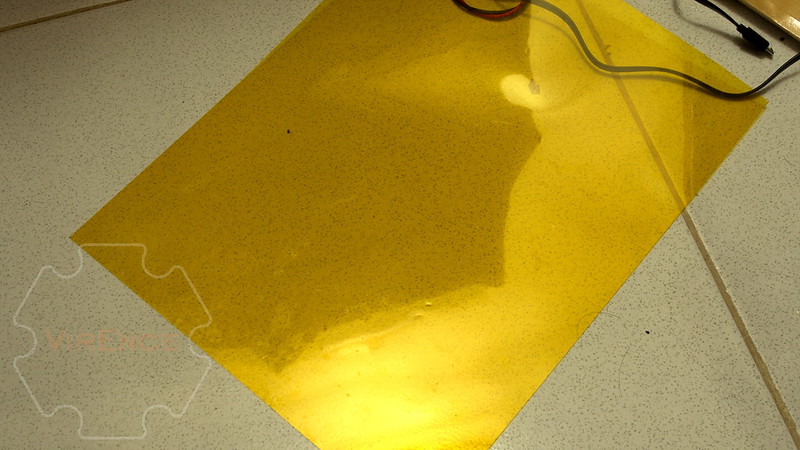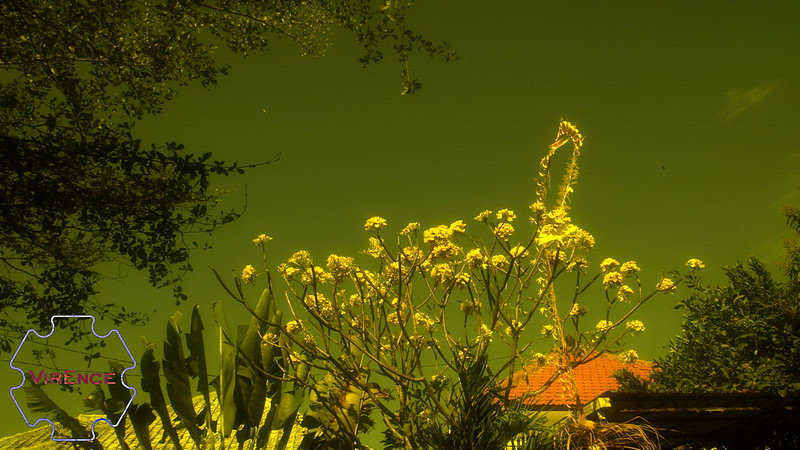
All pictures below taken with Manual mode and used same WB. speed, and aperture
———————————


———————————-


———————————-


———————————-


———————————-
[Clemence]

All pictures below taken with Manual mode and used same WB. speed, and aperture
———————————


———————————-


———————————-


———————————-


———————————-
[Clemence]
Clemence was not mentionning a green filter but a minus green filter. The denser Lee minus green filter approximates a CC30 magenta camera filter.
How about this one, welding… see it produce lights that so bright. I wonder how much lumens was that and what CCT level? ? ![]() From my bare eyes observation, that looks like, my guess 6000lumens or more with 6500k… I do recall a flashlight that can burn paper, acebeam??
From my bare eyes observation, that looks like, my guess 6000lumens or more with 6500k… I do recall a flashlight that can burn paper, acebeam??
but, the key things here is, that guy is using black shades to cover his eyes from looking direct EXCESSIVE amounts of lights that going to cause blindness. 2nd he used shades so that his eyes can filter trough a Ultrahigh brightness situation which make him able to see thus manage his task which is to welding…barely see though
Now, isnt’t that ultra high brightness flashlight can be dangerous? would love to hear from you all…

Based on Maukka and Djozz measurements. Color filter including your eye glasses, can increase or decrease CRI. The easiest example is the minus green filter. It even out the greeness to make the rest of the spectrums (if any) stands out more. CCT and CRI are the result of spectrum balance.
In your case, it’s blue filter. I haven’t seen any test result about it. To my understanding, filter can only reduce but won’t add anything that isn’t there in the first place.
@SKV89, could you help us to measure filtered low CRI 6500K lights you have? Thanks.[Clemence]
I learn something new everyday. These minus green filters do increase CRI and R9. Wow!
Acebeam TK16 w/ Oslon White Flat emitters
CCT: 6180K
DUV: 0.0038
Ra (CRI): 67.1
R1: 67.1
R2: 69.1
R3: 69.0
R4: 69.5
R5: 68.5
R6: 59.7
R7: 74.4
R8: 59.1
R9: –34.1
R10: 25.7
R11: 69.4
R12: 36.1
R13: 65.9
R14: 82.3
R15: 60.7
Rf: 63
Rg: 96
Acebeam TK16 w/ Oslon White Flat emitters and Lee 248 Half Minus Green Filter (Y=72%)
CCT: 5774K
DUV: –0.0129
Ra (CRI): 77.2
R1: 83.8
R2: 79.0
R3: 72.1
R4: 78.7
R5: 83.5
R6: 71.5
R7: 77.1
R8: 71.5
R9: 14.0
R10: 47.4
R11: 83.1
R12: 53.4
R13: 80.7
R14: 83.4
R15: 79.5
Rf: 66
Rg: 103
![]()
I learn something new everyday. These minus green filters do increase CRI and R9. Wow!
Say whaaat!!! :partying_face: :+1:
These kinds of exaggerations just have the effect of encouraging people new to the hobby to spend lots of money to finally find out what “HD vision” is like, since so many people on this forum use that term and supposedly experience it.
Let’s take the FireFlies E07 as an example. The high-cri version with SST20 4000K CRI95 cost 20 dollars less than the one with XPL Hi V2 5A 4000K and lower CRI.
You don’t need to spend lots of money for “HD vision”. ![]()
On a side note : “Taken together, the present results indicate that a wider spectral bandwidth of illumination allows the visual system to focus more accurately. From an ecological standpoint this does not come as a surprise because natural objects possess broad spectral reflectance functions, and the eye is seldom confronted with narrow-band light. Even the spectral distributions of colorful objects can be relatively broadband. When sunlight reflects diffusely from these objects, the retinal image is composed of light of a spectrum of wavelengths. Thus it seems reasonable to speculate that the visual system might have evolved focusing mechanisms that operate best in the presence of broadband illumination”.
(Source : Spectral bandwidth and ocular accommodation (pdf)).
Acebeam TK16 w/ Oslon White Flat emitters and Lee 248 Half Minus Green Filter (Y=72%)
CCT: 5774K
DUV: –0.0129
Ra (CRI): 77.2
CRI isn’t really valid for this light source. The duv of –0.0129 from the BBL isn’t white as per the CRI standard (CIE 13.3:1995). Duv of +–0.0054 is required and that’s why some software have a warning regarding CRI measurements if the duv is too large.
But yes, theoretically CRI has improved.
I worked in a photo lab for a while. I took some blue block filters taped them to my glasses and wore them around all day. For a while every think that was white looked yellow. Eventually my brain adjusted and every thing that was white looked white. Every thing that was blue looked black.
I see a huge difference between Sofirn C01 and Fenix E01 when it comes to recognition. They are extremes, of course. It doesn’t necessarily has to do with the difference in color rendering quality only, I also notice this outside when walking or running using CW vs. NW lights. Armyteks low CRI warm lights are still slightly better than CW headlamps like my old Black Diamond Storm. Beamshots can reproduce that. CW illuminated scenes usually look flat to me. Likely this ist due to the relevance of distinguish shades of green as opposed to shades of blue.
As Clemence has pointed out and experiments with Lee filters have shown, the proper amount of blue filtering can increase the CRI in low CRI, cold white emitters. Perceived brightness is a hard thing to debate here as there’s not a clear-cut way of measuring it. We have eyes that are effectively camera’s in ‘Full Auto’ - constantly adjusting white balance and exposure and focal length. I can see many sides of this topic/debate. For example, what one can say (and IMO be mostly correct) is that filters can’t ‘add’ anything and that - for certain - less light is reaching your ‘eyes’ while wearing the yellow lens glasses. However, what I don’t know is how the eyes respond to this reduction of blue-wavelengths in regards to pupil dilation. Will this decrease in lumens ‘at the front’ of the eye be offset by a larger pupil letting in more (basically the eyeball’s auto-exposure)? Thinking from this perspective, it’s possible that we could perceive in the right environment (think of a white room vs open field of dew covered grass) equal brightness with higher ‘CRI’. (CRI is in quotes because color fidelity is not equal to gamut and/or vividness)
Said another way, we would likely all agree that a beamshot comparison taken with a camera on Full Auto (with no read-out either ![]() ) would be inconclusive.
) would be inconclusive.
…
My experience and opinion for the blue-filtering (yellow lens) glasses is that they have certain applications that really do help visiblity. Driving at noon on a clear summer day is the best example from my experience. The effects are that the sky/horizon is darkened, and bright reflections and glare are reduced significantly, allowing you to open your eyes fully and also dilate the pupils. Objects on and alongside the road (heavy in red and green wavelengths) then seem ‘highlighted’ and you feel more ‘alert’.
Clemence (as always) provided some excellent examples with the photos in post #21. Let’s look at the last set of pictures - the ones of the bush against a bright, blue sky. The filtered image, even when viewed on a monitor, appears to ‘highlight’ the objects on the ground. In situations such as driving, this is beneficial. NOTE however these are taken with fixed exposure and WB. It’d be interesting to see them actually in AUTO.
…
Lastly, my 2 cents about ‘HD’ vision with high CRI/Rf/Rg is that it’s valid to an extent. Of course there are many, many people on the internet who will exaggerate anything and everything. Another fact is that everyone’s eyes and color acuity are different. Someone who is completely color blind will likely not be raving about their high R9 emitters, though someone like this lady with tetrachromacy may have a completely different opinion. In my n=1 experience, ‘good tinted’ hiCRI emitters provide significantly better visibility and pleasure (subjective), especially in my favorite environments where foliage, earth, and human skin are the main targets of illumination. As a result, I choose to spend my money nearly exclusively on hiCRI lighting products.
As an example of colors effect on visibility, I’ll once again refer to the images that Clemence posted of color vs grey-scale (post #3). The point of this comparison can be measured by the amount of time you have to look at the image to ‘feel’ like you mostly understand the environment. For me, it was 5+ seconds for grey images and probably about half for colored.
-Jared
I posted that photo with the arrows that I added, to demonstrate to HDS people that the XPG3 sucks!
I will try to link you to my original post with that photo , though CPF is running hella slow and may not load atm… back in a flash… go through that thread, you will see a lot of pics showing how terrible the tint is of the XP-G3, and you will see Hogo display his ignorance about tint shift
so they tarred and feathered me and ran me out of town
after which I sold my HDS in disgust for the ignorance and fanboyism of that crowd
in any case, the owner of those lights admitted that the object at the end of the arrow is indeed a red frisbee, not a yellow one
so, what else do you need to know?
more lumens, showing the wrong color is imo, NOT better than less lumens showing the correct color
but HDS people just buy the most lumens, because people think lumens matter more than CRI… I feel the opposite
if its not High CRI, I do not care how high the lumens are… I dont want to harvest yellow frisbees, only to find out I chose a poisonous Amanita Muscaria by mistake, because my Low CRI, Green/Yellow tinted XPG3 misled me
.
Now about filters
If you filter an LED that already has negative R9 (red output), the filter cannot add Red that is not already there, it will just make things marroon, or some other non Red color
so the bottom line, for me, is to start with a High CRI LED with High R9 (Red) output
then if you want to massage the tint, filter to your hearts content
more lumens of negative R9 wont make the light produce Red that it cannot produce
dont kid yourself, a filter over a low CRI LED will NOT match the color rendering of a High CRI LED with high R9 output
here is some more info about the XP-G3 that I love to hate
The XPG3 created a lot of excitement when it was first tested because of its high output and low Vf. With a die area very close to the XPG2 but with more output, the XPG3 was anticipated to beat the XPG2 for thrower applications. But the performance of the XPG3 in flashlights was disappointing in some ways: the measured throw when dedomed was significantly less than the dedomed XPG2 and there was a pronounced angular/spatial “tint shift” in the beam which was distracting and hindered object iden…